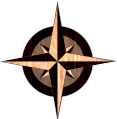On the 1st day of January, 1853, we embarked at Havre on the Steamship "Commodore," Captain Little, then plying regularly between said port and Liverpool, England. My vivid impression at our parting scene, that I never should again look upon my father's face in this world. My mother's last advice was, "Gustave, always keep company with those who are better, not worse, then you are." Father's admonition still lingers in memory. "Gustave, be true to your friends." The first advice, I might have adhered to more closely, the last, I have strictly endeavored to keep. If my conscience must be the judge, then my decision on this subject is final.
Sister, having acquired a good English education, spoke the language fluently. I had badly neglected that necessary part and was just a thoroughbred French boy. The first half day I mastered "yes" and "no".
That voyage was terrific for me, although born and brought up near the Atlantic Ocean, in fact on its very shore; the crossing of the Irish Channel completely upset what there was of me.
Father had very thoughtfully and generously provided us with oranges, lemons, claret, brandy, but the sailors, between Havre and New Orleans could tell more about what became of their distribution than I can, unless "Mnemosyne," the goddess of memory, has paralyzed their recollection. The only memento left us were the empty cases on our arrival at New Orleans. We had good friends among the crew while traversing the Atlantic, for we made them such.
A day or two later found us upon the "James Toy," [POSSIBLY, James Roy] a steamer ploughing through the muddy and mighty Mississippi River on our way to St. Louis, Missouri. Staying in that city two weeks, we were overtaken by my brother [p.3] Eugene and some ladies from the French mission. Miss Julia Leroy, Miss Ernestine Nichols and Miss Mary Mallet, now the wife of Eugene.
Another trip upon the Missouri River conveyed us to Keokuk, Iowa, where we camped for several weeks, waiting for our wagons, cattle and interminable plains over a thousand miles in length with but two Oasises in the desert, namely Fort Laramie and Fort Bridger over forty years ago. . . . [p.4]
. . . At last we came rolling down Emigration Canyon and out into Great Salt Lake Valley. It was on the 6th day of October 1853, the weather was beautiful ad every heart seemed joyful giving a sigh of relief and contentment in beholding in the near distance the "City of the Saints", the destined home and headquarters of the Mormons. . . . [p.6]
BIB: Henriod, Gustave Louis Edward, Autobiography (MS 9991) pp. 3-4,6; [Acc. #135896] (CHL)
(source abbreviations)
 Saints by Sea
Saints by Sea